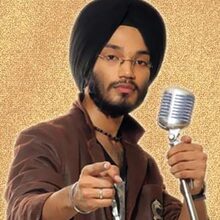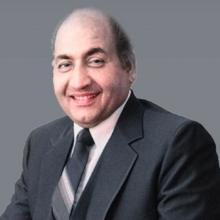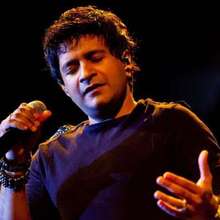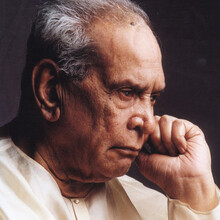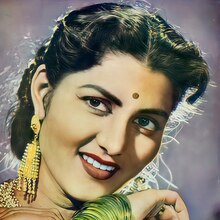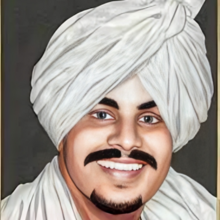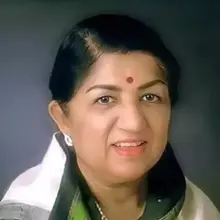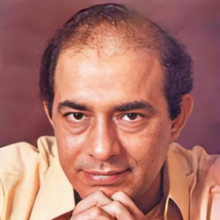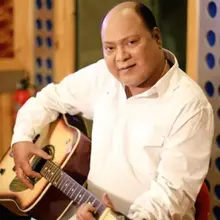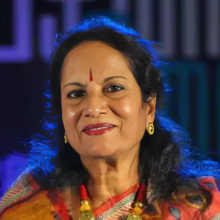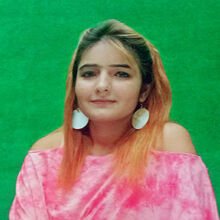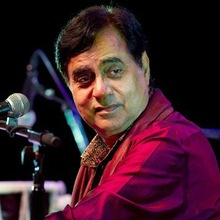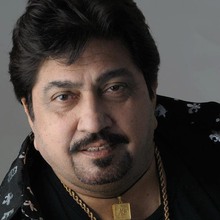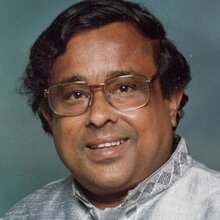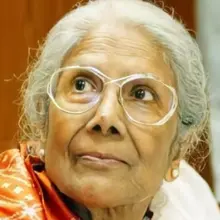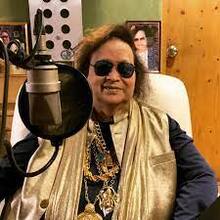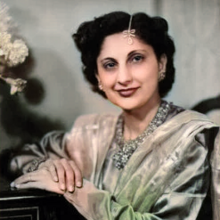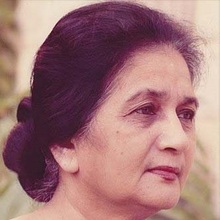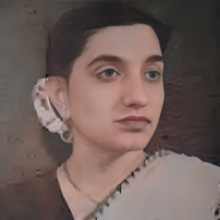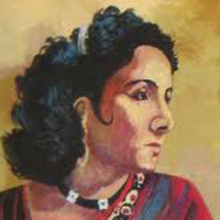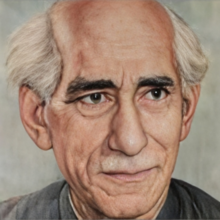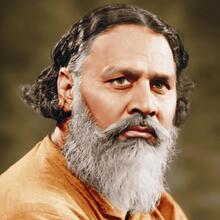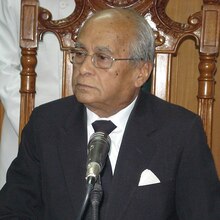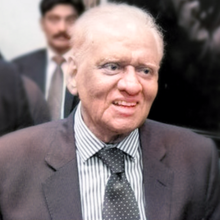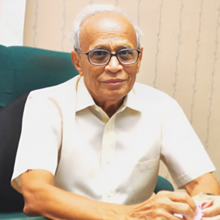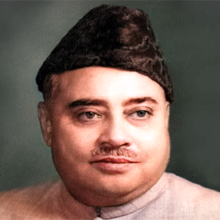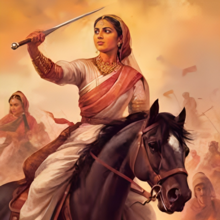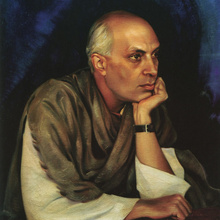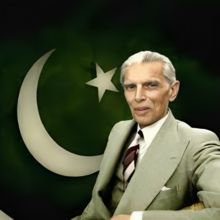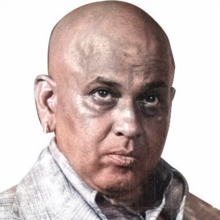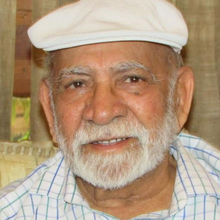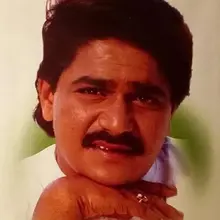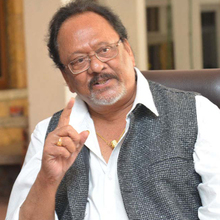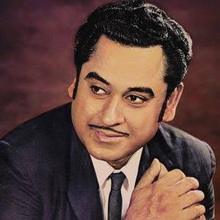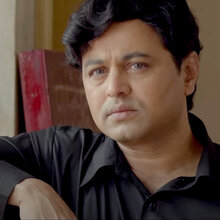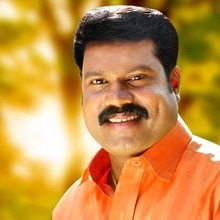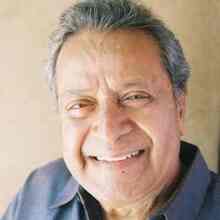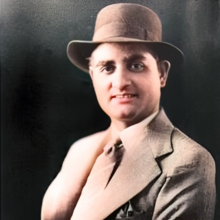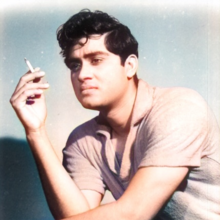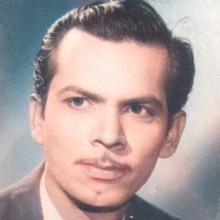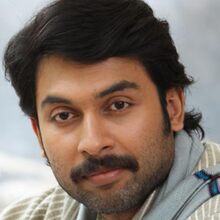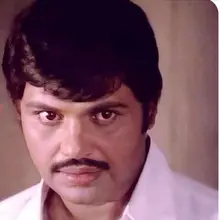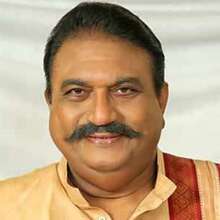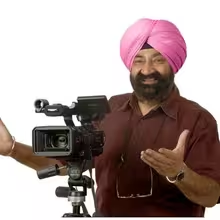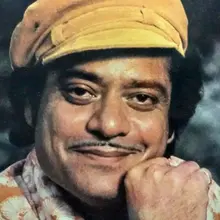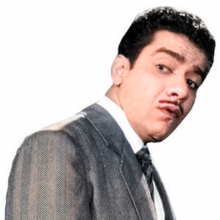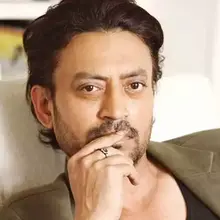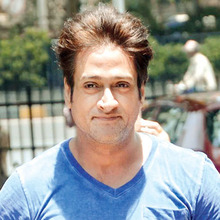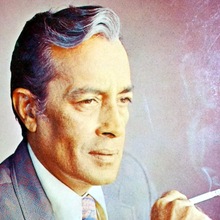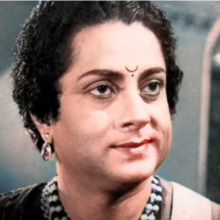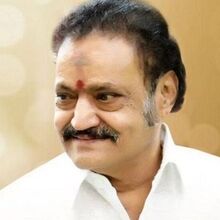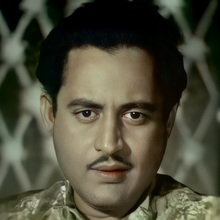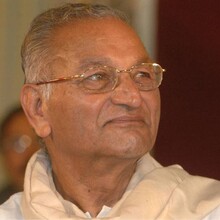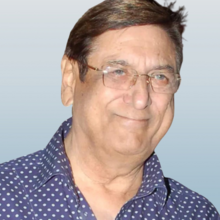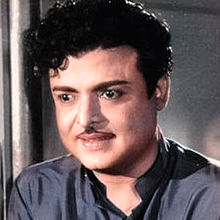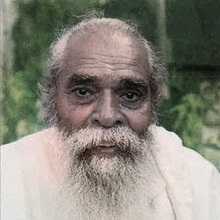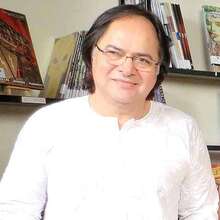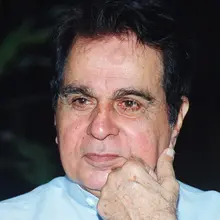 Syed Ata Ullah Shah Bukhari
1892 - 1961
Founder of Majlis-e-Ahrar-ul-Islam
Syed Ata Ullah Shah Bukhari
1892 - 1961
Founder of Majlis-e-Ahrar-ul-Islam
 Syed Ishtiaq Ahmed Jaffrey
1939 - 2020
Comedian, actor, director, singer
Syed Ishtiaq Ahmed Jaffrey
1939 - 2020
Comedian, actor, director, singer
 Adurthi Subba Rao
1912 - 1975
Director, cinematographer, screenwriter,
Adurthi Subba Rao
1912 - 1975
Director, cinematographer, screenwriter,
 Yellapragada Subbarow
1895 - 1948
Biochemist and researcher
Yellapragada Subbarow
1895 - 1948
Biochemist and researcher
 Johnny Walker
1924 - 2003
Actor, comedian, bus conductor
Johnny Walker
1924 - 2003
Actor, comedian, bus conductor
 Vasant Ranchhod Gowarikar
1933 - 2015
Space scientist and weather expert
Vasant Ranchhod Gowarikar
1933 - 2015
Space scientist and weather expert
 Jnan Chandra Ghosh
1894 - 1959
Chemist and director of IIT Kharagpur
Jnan Chandra Ghosh
1894 - 1959
Chemist and director of IIT Kharagpur
 Mankombu Sambasivan Swaminathan
1925 - 2023
Agronomist,agricultural scientist,plant geneticist
Mankombu Sambasivan Swaminathan
1925 - 2023
Agronomist,agricultural scientist,plant geneticist
 Kailasam Balachander
1930 - 2014
Director, writer and producer of Tamil cinema
Kailasam Balachander
1930 - 2014
Director, writer and producer of Tamil cinema
 Paritala Ravindra
1958 - 2005
Cabinet minister and MLA of Andhra Pradesh
Paritala Ravindra
1958 - 2005
Cabinet minister and MLA of Andhra Pradesh
 Roddam Narasimha
1933 - 2020
Aerospace scientist and fluid dynamicist
Roddam Narasimha
1933 - 2020
Aerospace scientist and fluid dynamicist
 Channapatna Ramaswami Simha
1942 - 2014
Acting and directing in Kannada films
Channapatna Ramaswami Simha
1942 - 2014
Acting and directing in Kannada films
 Satish Gujral
1925 - 2020
Painter, sculptor, muralist, writer, architect
Satish Gujral
1925 - 2020
Painter, sculptor, muralist, writer, architect
 Hijab Imtiaz Ali
1908 - 1999
Writer, editor, pilot
Hijab Imtiaz Ali
1908 - 1999
Writer, editor, pilot
 Baburao Painter
1890 - 1954
Filmmaker, painter, sculptor
Baburao Painter
1890 - 1954
Filmmaker, painter, sculptor
 Zafar Muhammad Khan
1942 - 1971
Naval captain and commanding officer
Zafar Muhammad Khan
1942 - 1971
Naval captain and commanding officer
 Srinivasa Ramanujan
1887 - 1920
Mathematical genius
Srinivasa Ramanujan
1887 - 1920
Mathematical genius
 Sufi Ghulam Mustafa Tabassum
1899 - 1978
Poet, scholar and translator who wrote
Sufi Ghulam Mustafa Tabassum
1899 - 1978
Poet, scholar and translator who wrote
 Ambazhathil Karunakaran Lohithadas
1955 - 2009
Screenwriter and director of Malayalam cinema
Ambazhathil Karunakaran Lohithadas
1955 - 2009
Screenwriter and director of Malayalam cinema
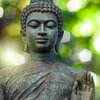 Buddha
-564 - -483
Buddha
-564 - -483
 Surinder Shinda
1959 - 2023
Playback singer
Surinder Shinda
1959 - 2023
Playback singer
 Pralhad Keshav Atre
1898 - 1969
Writer, poet, educationist, founder–editor
Pralhad Keshav Atre
1898 - 1969
Writer, poet, educationist, founder–editor
 Amal Kumar Raychaudhuri
1923 - 2005
Theoretical physicist and cosmologist
Amal Kumar Raychaudhuri
1923 - 2005
Theoretical physicist and cosmologist
 Mohan Samant
1924 - 2004
Early Indian modernist painter
Mohan Samant
1924 - 2004
Early Indian modernist painter
 Sanjay Surkar
1959 - 2012
Marathi film director
Sanjay Surkar
1959 - 2012
Marathi film director
 Rulda Singh
1952 - 2009
President of Rashtriya Sikh Sangat
Rulda Singh
1952 - 2009
President of Rashtriya Sikh Sangat
 Asima Chatterjee
1917 - 2006
organic chemist and phytomedicine researcher
Asima Chatterjee
1917 - 2006
organic chemist and phytomedicine researcher
 Ratan Lal Brahmachary
1932 - 2018
Biochemist and pioneer of tiger pheromone studies
Ratan Lal Brahmachary
1932 - 2018
Biochemist and pioneer of tiger pheromone studies
 Joseph Panimayadas Chandrababu Rodriguez
1927 - 1974
Comedian, actor, director, singer
Joseph Panimayadas Chandrababu Rodriguez
1927 - 1974
Comedian, actor, director, singer
 Muddu Babu Shetty
1938 - 1982
Stuntman, action choreographer and actor
Muddu Babu Shetty
1938 - 1982
Stuntman, action choreographer and actor
 Rabindranath Tagore
1861 - 1941
Poet, writer, composer, painter, philosopher
Rabindranath Tagore
1861 - 1941
Poet, writer, composer, painter, philosopher
 Syed Zahoor Qasim
1926 - 2015
Marine biologist and Antarctic explorer
Syed Zahoor Qasim
1926 - 2015
Marine biologist and Antarctic explorer
 Farhat Ezekiel Nadira
1932 - 2006
Playing seductive and glamorous roles
Farhat Ezekiel Nadira
1932 - 2006
Playing seductive and glamorous roles
 Ila Ghose
1930 - 2019
Mechanical engineer , first woman engineer
Ila Ghose
1930 - 2019
Mechanical engineer , first woman engineer
 Yash Pal
1926 - 2017
Cosmic rays physics, institution-building
Yash Pal
1926 - 2017
Cosmic rays physics, institution-building
 Raja Muhammad Sarwar
1910 - 1948
Captain in Pakistan Army
Raja Muhammad Sarwar
1910 - 1948
Captain in Pakistan Army
 Sardar Ganda Thakur Singh
1899 - 1976
Painter
Sardar Ganda Thakur Singh
1899 - 1976
Painter
 Malaysia Vasudevan
1944 - 2011
Playback singer and actor in Tamil cinema
Malaysia Vasudevan
1944 - 2011
Playback singer and actor in Tamil cinema
 Asif Basra
1967 - 2020
Hindi film and web series actor
Asif Basra
1967 - 2020
Hindi film and web series actor
 Sarfraz Rafiqui
1935 - 1965
Flying ace and war hero
Sarfraz Rafiqui
1935 - 1965
Flying ace and war hero
 Akkamappettai Paramasivan Nagarajan
1928 - 1977
Film director, producer, actor and writer
Akkamappettai Paramasivan Nagarajan
1928 - 1977
Film director, producer, actor and writer
 Irrfan Khan
1967 - 2020
Actor in Hindi, British and American films
Irrfan Khan
1967 - 2020
Actor in Hindi, British and American films
 Govindan Aravindan
1935 - 1991
Film director, screenwriter, musician, cartoonist
Govindan Aravindan
1935 - 1991
Film director, screenwriter, musician, cartoonist
 Meghnad Saha
1893 - 1956
Thermal ionisation و Saha ionisation equation
Meghnad Saha
1893 - 1956
Thermal ionisation و Saha ionisation equation
 Haziqul Khairi
1931 - 2023
Chief Justice of the Federal Shariat Court
Haziqul Khairi
1931 - 2023
Chief Justice of the Federal Shariat Court
 Jawaharlal Nehru
1889 - 1964
First prime minister of independent
Jawaharlal Nehru
1889 - 1964
First prime minister of independent
 Harshita Dahiya
1995 - 2017
Playback singer
Harshita Dahiya
1995 - 2017
Playback singer
 Harikrishna Nandamuri
1956 - 2018
Actor, producer, and politician
Harikrishna Nandamuri
1956 - 2018
Actor, producer, and politician
 Nek Chand
1924 - 2015
Creator of Rock Garden of Chandigarh
Nek Chand
1924 - 2015
Creator of Rock Garden of Chandigarh
 Indira Priyadarshini Gandhi
1917 - 1984
Prime Minister of India, leader
Indira Priyadarshini Gandhi
1917 - 1984
Prime Minister of India, leader
 A. P. J. Abdul Kalam
1931 - 2015
Missile Man of India
A. P. J. Abdul Kalam
1931 - 2015
Missile Man of India
 Bharat Bhushan
1920 - 1992
Playing Baiju Bawra in the 1952 film
Bharat Bhushan
1920 - 1992
Playing Baiju Bawra in the 1952 film
 Arun Kumar Biswas
1934 - 2015
Professor of mineral engineering
Arun Kumar Biswas
1934 - 2015
Professor of mineral engineering
 Rani Lakshmi Bai
1828 - 1858
Queen of Jhansi and leader
Rani Lakshmi Bai
1828 - 1858
Queen of Jhansi and leader
 Tanjore Ramachandra Anantharaman
1927 - 2009
Metallurgy and materials science
Tanjore Ramachandra Anantharaman
1927 - 2009
Metallurgy and materials science
 Waheeda Naseem
1927 - 1996
Novelist, poet, short story writer, fiction writer
Waheeda Naseem
1927 - 1996
Novelist, poet, short story writer, fiction writer
 Avtar Kishan Hangal
1914 - 2012
Character actor in Hindi cinema
Avtar Kishan Hangal
1914 - 2012
Character actor in Hindi cinema
 Rajeev Motwani
1962 - 2009
Professor of Computer Science
Rajeev Motwani
1962 - 2009
Professor of Computer Science
 Yelavarthy Nayudamma
1922 - 1985
Chemical engineer and leather technologist
Yelavarthy Nayudamma
1922 - 1985
Chemical engineer and leather technologist
 Krishna Raju
1948 - 2002
Ornithologist and bird ringer
Krishna Raju
1948 - 2002
Ornithologist and bird ringer
 Vasudeo S. Gaitonde
1924 - 2001
Abstract painter
Vasudeo S. Gaitonde
1924 - 2001
Abstract painter
 Zaman Shah Durrani
1767 - 1844
King
Zaman Shah Durrani
1767 - 1844
King
 Dilip Kumar
1922 - 2021
Actor, film producer, and politician
Dilip Kumar
1922 - 2021
Actor, film producer, and politician
 Gaganendranath Tagore
1867 - 1938
Painter and cartoonist of the Bengal School of Art
Gaganendranath Tagore
1867 - 1938
Painter and cartoonist of the Bengal School of Art
 Kedareswar Banerjee
1900 - 1975
X-ray crystallography
Kedareswar Banerjee
1900 - 1975
X-ray crystallography
 Raja Paranjape
1910 - 1979
Actor, director, producer and writer
Raja Paranjape
1910 - 1979
Actor, director, producer and writer
 Ishmeet Singh
1988 - 2008
Playback singer and musician
Ishmeet Singh
1988 - 2008
Playback singer and musician
 Khawaja Nazimuddin
1894 - 1964
Second Governor-General and Prime Minister
Khawaja Nazimuddin
1894 - 1964
Second Governor-General and Prime Minister
 Sambhu Nath De
1915 - 1985
Medical scientist and researcher
Sambhu Nath De
1915 - 1985
Medical scientist and researcher
 Kundan Lal Saigal
1904 - 1947
Singer,actor,first superstar film industry
Kundan Lal Saigal
1904 - 1947
Singer,actor,first superstar film industry
 Turaga Sundara Rama Prasada Rao
1939 - 2022
Petroleum engineering and heterogeneous catalysis
Turaga Sundara Rama Prasada Rao
1939 - 2022
Petroleum engineering and heterogeneous catalysis
 Rabin Mondal
1929 - 2019
founding member of the Calcutta Painters
Rabin Mondal
1929 - 2019
founding member of the Calcutta Painters
 Maqbool Fida Husain
1915 - 2011
Modernist painter and filmmaker
Maqbool Fida Husain
1915 - 2011
Modernist painter and filmmaker
 Nandalal Bose
1882 - 1966
Pioneer of modern Indian art
Nandalal Bose
1882 - 1966
Pioneer of modern Indian art
 Mohammed Aziz
1954 - 2018
Playback Singer
Mohammed Aziz
1954 - 2018
Playback Singer
 Abanindranath Tagore
1871 - 1951
Painter and writer
Abanindranath Tagore
1871 - 1951
Painter and writer
 Mohammed Rafi
1924 - 1980
Playback singer and musician
Mohammed Rafi
1924 - 1980
Playback singer and musician
 Mambillikalathil Govind Kumar Menon
1928 - 2016
particle physics and cosmic rays research
Mambillikalathil Govind Kumar Menon
1928 - 2016
particle physics and cosmic rays research
 Subhash Mukhopadhyay
1931 - 1981
Creator of India's first test tube baby
Subhash Mukhopadhyay
1931 - 1981
Creator of India's first test tube baby
 Indra Sen Johar
1920 - 1984
Comedian, actor, writer, producer and director
Indra Sen Johar
1920 - 1984
Comedian, actor, writer, producer and director
 Raja Ramanna
1925 - 2004
Nuclear physicist and director
Raja Ramanna
1925 - 2004
Nuclear physicist and director
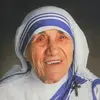 Mother Teresa
1910 - 1997
Mother Teresa
1910 - 1997
 Bindiganavile Srinivas Ranga
1917 - 2010
Photographer, actor, producer, director, founder
Bindiganavile Srinivas Ranga
1917 - 2010
Photographer, actor, producer, director, founder
 Vidya Charan Shukla
1929 - 2013
Minister of Information and Broadcasting
Vidya Charan Shukla
1929 - 2013
Minister of Information and Broadcasting
 Abhas Kumar Ganguly
1929 - 1987
Playback singer, actor, music director
Abhas Kumar Ganguly
1929 - 1987
Playback singer, actor, music director
 Amar Singh Chamkila
1960 - 1988
Folk Singer and Songwriter
Amar Singh Chamkila
1960 - 1988
Folk Singer and Songwriter
 Sandhya Mukhopadhyay
1931 - 2022
Playback singer
Sandhya Mukhopadhyay
1931 - 2022
Playback singer
 Salim Moizuddin Abdul Ali
1896 - 1987
Ornithologist and naturalist
Salim Moizuddin Abdul Ali
1896 - 1987
Ornithologist and naturalist
 Chhabi Biswas
1900 - 1962
Actor and director
Chhabi Biswas
1900 - 1962
Actor and director
 Talat Mahmood
1924 - 1998
Playback Singer and Ghazal Singer
Talat Mahmood
1924 - 1998
Playback Singer and Ghazal Singer
 Laxmikant Berde
1954 - 2004
Actor and comedian, appeared
Laxmikant Berde
1954 - 2004
Actor and comedian, appeared
 Phoolan Devi
1963 - 2001
Bandit leader, Member of Parliament
Phoolan Devi
1963 - 2001
Bandit leader, Member of Parliament
 Bob Christo
1938 - 2011
Actor in Hindi films
Bob Christo
1938 - 2011
Actor in Hindi films
 Chandrashekhar Vaidya
1922 - 2021
Actor and filmmaker
Chandrashekhar Vaidya
1922 - 2021
Actor and filmmaker
 Hara Patnaik
1958 - 2015
Actor, director, screenplay writer, singer
Hara Patnaik
1958 - 2015
Actor, director, screenplay writer, singer
 Sisir Kumar Mitra
1890 - 1963
Radio physics and atmospheric science
Sisir Kumar Mitra
1890 - 1963
Radio physics and atmospheric science
 Azhikodan Raghavan
1919 - 1972
Chief Minister of Saurashtra, leader of opposition
Azhikodan Raghavan
1919 - 1972
Chief Minister of Saurashtra, leader of opposition
 Satyajit Ray
1921 - 1992
Director, screenwriter, composer, illustrator
Satyajit Ray
1921 - 1992
Director, screenwriter, composer, illustrator
 Gopalasamudram Narayanan Ramachandran
1922 - 2001
physicist and biophysicist
Gopalasamudram Narayanan Ramachandran
1922 - 2001
physicist and biophysicist
 Honnappa Bhagavathar
1915 - 1992
Theatre and film actor, producer, musician
Honnappa Bhagavathar
1915 - 1992
Theatre and film actor, producer, musician
 Shantaram Rajaram Vankudre
1901 - 1990
Film director, producer, actor, and screenwriter
Shantaram Rajaram Vankudre
1901 - 1990
Film director, producer, actor, and screenwriter
 K. Ananda Rau
1893 - 1966
Mathematics professor and researcher
K. Ananda Rau
1893 - 1966
Mathematics professor and researcher
 Guru Dutt
1925 - 1964
Film director, producer, actor, choreographer
Guru Dutt
1925 - 1964
Film director, producer, actor, choreographer
 Ghazi Mohammad Ayub Khan
1857 - 1914
Emir of Afghanistan
Ghazi Mohammad Ayub Khan
1857 - 1914
Emir of Afghanistan
 Zubeida Habib Rahimtoola
1917 - 2015
Social worker, political activist
Zubeida Habib Rahimtoola
1917 - 2015
Social worker, political activist
 Balakrishnan Nair
1933 - 2000
Indian film actor and theatre artist
Balakrishnan Nair
1933 - 2000
Indian film actor and theatre artist
 Vani Jairam
1945 - 2023
Playback singer
Vani Jairam
1945 - 2023
Playback singer
 Waman Dattatreya Patwardhan
1917 - 2007
Nuclear chemist and director
Waman Dattatreya Patwardhan
1917 - 2007
Nuclear chemist and director
 Manchanahalli Rangaswamy Satyanarayana Rao
1948 - 2023
Chromatin Biology and Cancer Biology
Manchanahalli Rangaswamy Satyanarayana Rao
1948 - 2023
Chromatin Biology and Cancer Biology
 Prahalad Chunnilal Vaidya
1918 - 2010
General theory of relativity, Vaidya metric
Prahalad Chunnilal Vaidya
1918 - 2010
General theory of relativity, Vaidya metric
 Chandrasekhara Venkata Raman
1888 - 1970
Nobel laureate for work on light scattering
Chandrasekhara Venkata Raman
1888 - 1970
Nobel laureate for work on light scattering
 Amrish Puri
1932 - 2005
Hindi film actor
Amrish Puri
1932 - 2005
Hindi film actor
 Diogo do Couto
1542 - 1616
Historian of the Portuguese in Asia and Africa
Diogo do Couto
1542 - 1616
Historian of the Portuguese in Asia and Africa
 Uppugunduri Aswathanarayana
1928 - 2016
Geology, geochemistry, resources management
Uppugunduri Aswathanarayana
1928 - 2016
Geology, geochemistry, resources management
 Ambareesh
1952 - 2018
Kannada film actor and politician
Ambareesh
1952 - 2018
Kannada film actor and politician
 Lekh Tandon
1929 - 2017
Filmmaker and actor, directed movies
Lekh Tandon
1929 - 2017
Filmmaker and actor, directed movies
 Martim Afonso de Sousa
1500 - 1564
First colonizer of Brazil
Martim Afonso de Sousa
1500 - 1564
First colonizer of Brazil
 Puttanna Kanagal
1933 - 1985
Film director, producer, screenwriter
Puttanna Kanagal
1933 - 1985
Film director, producer, screenwriter
 Ajit Khan
1922 - 1998
Hindi film actor
Ajit Khan
1922 - 1998
Hindi film actor
 Mohammad Yaqub Khan
1849 - 1923
Emir
Mohammad Yaqub Khan
1849 - 1923
Emir
 Bhim Singh
1924 - 1978
Film director, producer, editor, and writer
Bhim Singh
1924 - 1978
Film director, producer, editor, and writer
 Kunnisseri Veettil Raman Mani
1971 - 2016
Actor and singer, appeared in over 250 films
Kunnisseri Veettil Raman Mani
1971 - 2016
Actor and singer, appeared in over 250 films
 Vijay Kumar Kapahi
1944 - 1999
Astrophysicist and director
Vijay Kumar Kapahi
1944 - 1999
Astrophysicist and director
 Bullet Prakash
1976 - 2020
Acting in Kannada films and TV serials
Bullet Prakash
1976 - 2020
Acting in Kannada films and TV serials
 Bhagwan Dada
1913 - 2002
Comedian and dancer
Bhagwan Dada
1913 - 2002
Comedian and dancer
 Jagjit Singh
1941 - 2011
Ghazal singer
Jagjit Singh
1941 - 2011
Ghazal singer
 Mohammad Ali Jinnah
1876 - 1948
Founder and first governor-general of Pakistan
Mohammad Ali Jinnah
1876 - 1948
Founder and first governor-general of Pakistan
 Upendranath Brahmachari
1873 - 1946
discovering urea stibamine for kala-azar treatment
Upendranath Brahmachari
1873 - 1946
discovering urea stibamine for kala-azar treatment
 Jaspal Bhatti
1955 - 2012
Comedian, satirist, actor, director, producer
Jaspal Bhatti
1955 - 2012
Comedian, satirist, actor, director, producer
 Bikash Bhattacharjee
1940 - 2006
Realist and surrealist painter
Bikash Bhattacharjee
1940 - 2006
Realist and surrealist painter
 Bhimsen Gururaj Joshi
1922 - 2011
Hindustani classical vocalist
Bhimsen Gururaj Joshi
1922 - 2011
Hindustani classical vocalist
 Rajo Singh
1928 - 2005
Member of parliament, Lok Sabha
Rajo Singh
1928 - 2005
Member of parliament, Lok Sabha
 Syed Abdulla Hussain
1944 - 2009
Ornithologist and conservationist
Syed Abdulla Hussain
1944 - 2009
Ornithologist and conservationist
 S. P. Jananathan
1959 - 2021
Film director, screenwriter, producer
S. P. Jananathan
1959 - 2021
Film director, screenwriter, producer
 Subbayya Sivasankaranarayana Pillai
1901 - 1950
Number theory
Subbayya Sivasankaranarayana Pillai
1901 - 1950
Number theory
 Mohandas Karamchand Gandhi
1869 - 1948
Leader of the Indian independence movement
Mohandas Karamchand Gandhi
1869 - 1948
Leader of the Indian independence movement
 Chandra Mohan
1906 - 1949
Acting in Hindi films as a villain
Chandra Mohan
1906 - 1949
Acting in Hindi films as a villain
 Nitin Chandrakant Desai
1965 - 2023
Art director and production designer
Nitin Chandrakant Desai
1965 - 2023
Art director and production designer
 Karaganahalli Subbaraya Ashwathanarayana
1935 - 2022
Actor, producer, director, and politician
Karaganahalli Subbaraya Ashwathanarayana
1935 - 2022
Actor, producer, director, and politician
 Ram Mohan Rao
1939 - 2005
Lead actor in Telugu cinema
Ram Mohan Rao
1939 - 2005
Lead actor in Telugu cinema
 Vikram Sarabhai
1919 - 1971
Physicist and astronomer, founder of ISRO
Vikram Sarabhai
1919 - 1971
Physicist and astronomer, founder of ISRO
 Chandulal Shah
1898 - 1975
director, producer, screenwriter, founder
Chandulal Shah
1898 - 1975
director, producer, screenwriter, founder
 Bharathan
1946 - 1998
director, art director, sculptor, poster designer
Bharathan
1946 - 1998
director, art director, sculptor, poster designer
 Mahendran
1939 - 2019
Film director, screenwriter and actor
Mahendran
1939 - 2019
Film director, screenwriter and actor
 Thanu Padmanabhan
1957 - 2021
Theoretical physicist and cosmologist
Thanu Padmanabhan
1957 - 2021
Theoretical physicist and cosmologist
 Bholekar Srihari
1941 - 2018
Painter, sculptor and printmaker
Bholekar Srihari
1941 - 2018
Painter, sculptor and printmaker
 Lala Jagat Narain
1899 - 1981
Editor, founder of Hind Samachar media group
Lala Jagat Narain
1899 - 1981
Editor, founder of Hind Samachar media group
 Nishikant Kamat
1970 - 2020
Director of Drishyam and Madaari
Nishikant Kamat
1970 - 2020
Director of Drishyam and Madaari
 Palissery Narayanankutty Menon
1926 - 2008
director and art director in Malayalam cinema
Palissery Narayanankutty Menon
1926 - 2008
director and art director in Malayalam cinema
 Smita Talwalkar
1954 - 2014
Marathi film actress, producer and director
Smita Talwalkar
1954 - 2014
Marathi film actress, producer and director
We Need -- admin in


